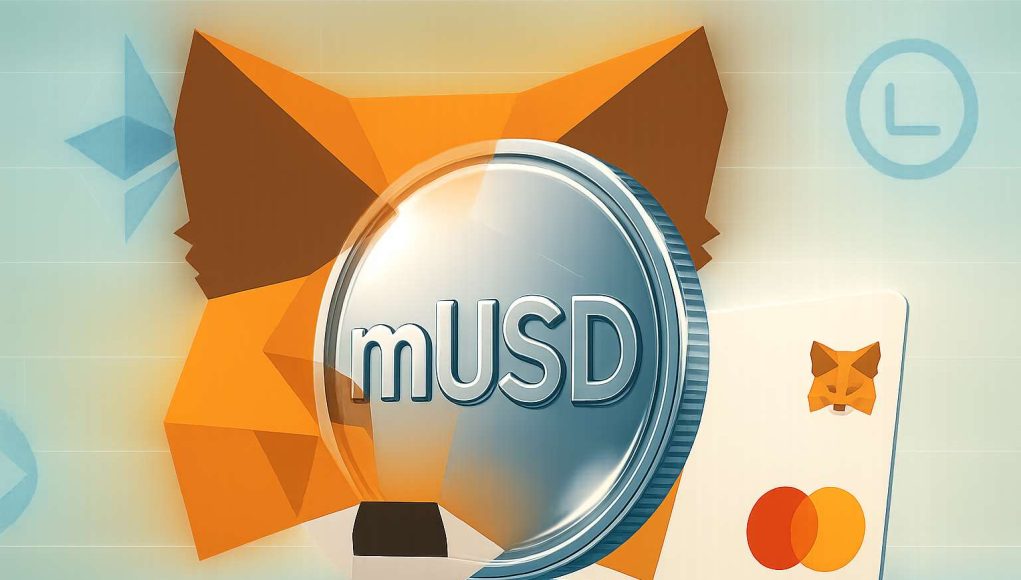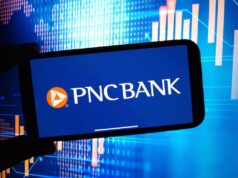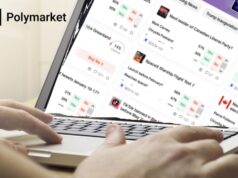MetaMask has launched its own dollar-pegged stablecoin, MetaMask USD (mUSD). It is bringing a wallet-native model to a market dominated by third-party issuers. After unveiling the product on August 21, 2025, the company confirms mUSD is now live with native support for on-ramping, swaps, transfers, and cross-chain bridging inside the MetaMask wallet. The first deployments are on Ethereum and Linea, Consensys’ EVM-equivalent L2.
How mUSD Works: Bridge (a Stripe company) + M0 under the hood
MetaMask’s mUSD is issued by Bridge, a stablecoin issuance/orchestration platform that Stripe acquired in early 2025. On-chain, the token uses M0’s decentralized stablecoin infrastructure for interoperability and liquidity across chains. MetaMask says the coin will be fully backed 1:1 by high-quality, highly liquid dollar-equivalent assets, with a transparency posture aligned to its ecosystem ambitions.
Why a Wallet-Native Stablecoin?
For years, MetaMask users have relied on external stablecoins to hold a dollar balance, trade, or bridge across networks. With MetaMask mUSD integrated directly into the wallet, the company argues it can reduce friction and fees for on-ramps, swaps, and cross-chain transfers. MetaMask already has a product footprint in these areas. The wallet-native approach also creates a consistent “digital dollar” experience across DeFi apps accessed via the wallet.
From On-Ramp to Checkout: Payments Are the Next Frontier
Today’s launch focuses on DeFi and in-wallet liquidity. However, MetaMask also ties mUSD to a real-world payments roadmap: the MetaMask Card, targeting acceptance at Mastercard merchants. That unlocks a clear path from fiat on-ramp to on-chain stablecoin to everyday spending, all under one brand experience. Partners and prior updates suggest the card program and on-ramping rails (e.g., via Bridge and integrations like Transak) are core to the go-to-market.
Timing and Market Context
MetaMask first announced mUSD on August 21. Back then, the company framed it as a cornerstone for Linea’s DeFi growth and as a response to rising stablecoin volumes and improving U.S. clarity for payment stablecoins. The live rollout on September 15 answers the key question from the announcement stage, “when does it ship?”. It puts MetaMask alongside an expanding set of issuers as the stablecoin category continues to scale.
Can Wallet-Native Compete With USDT and USDC?
The incumbents enjoy deep liquidity, integrations, and institutional adoption, so MetaMask mUSD must earn its place pair by pair. Its advantages: MetaMask’s distribution and default presence across Ethereum and Linea, where MetaMask can nudge usage within its own ecosystem. Watch for circulating supply growth, DEX/AMM liquidity, lending-market listings, CEX support, and reserve disclosures that match the stated 1:1 backing.
>>> Read more: From Bridge to Backbone: Stripe Is Reinventing Global Payments
What Success Looks Like
If MetaMask mUSD becomes the default “digital dollar” for MetaMask flows, on-ramp, swap, bridge, and pay, it could carve out a durable niche without displacing incumbents everywhere. Expect a near-term focus on Linea DeFi integrations, followed by broader chain support and payments enablement via the MetaMask Card. The thesis: reduce friction at every step, and users will keep balances in mUSD because it’s the easiest stablecoin to use inside MetaMask.
Readers’ frequently asked questions
Who issues mUSD and how is it backed?
mUSD is issued by Bridge (a Stripe company) and built on M0. MetaMask states the stablecoin targets full 1:1 backing with high-quality, highly liquid dollar-equivalent assets and emphasizes transparency.
Which networks support mUSD at launch?
mUSD is live on Ethereum and Linea, with native on-ramp, swaps, transfers, and bridging available directly in the MetaMask wallet.
Can I spend mUSD at merchants?
MetaMask plans to enable spending through the MetaMask Card, targeting acceptance wherever Mastercard is supported. This would extend mUSD from DeFi into everyday purchases.
What Is In It For You? Action items you might want to consider
Verify network and contract
Double-check the official mUSD contract addresses on Ethereum and Linea before transacting to avoid scams or unofficial tokens.
Test and monitor liquidity
Start with small transfers and review liquidity on major DEX/AMM platforms to confirm depth and fair pricing for mUSD pairs.
Follow roadmap and transparency
Track MetaMask updates on card payments and watch for reserve disclosures from Bridge and M0 to confirm ongoing 1:1 backing.











[…] >>> Read more: MetaMask mUSD Launch: First Wallet-Native Stablecoin Goes Live […]